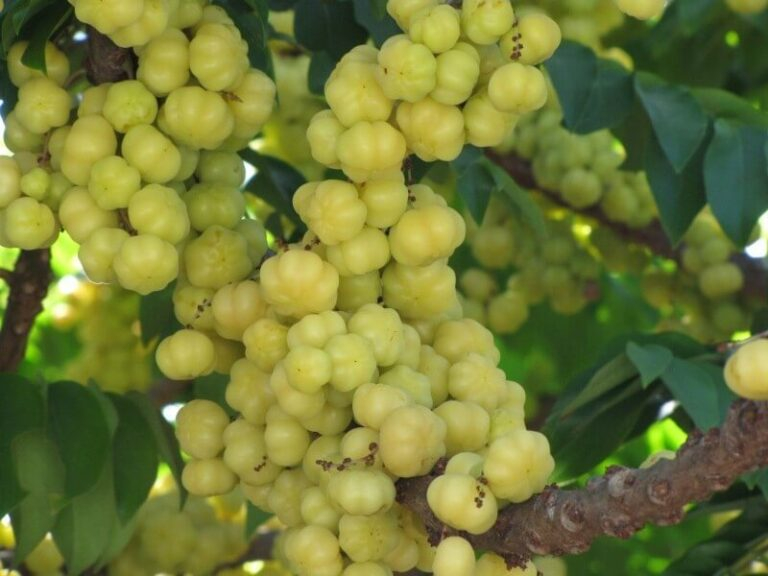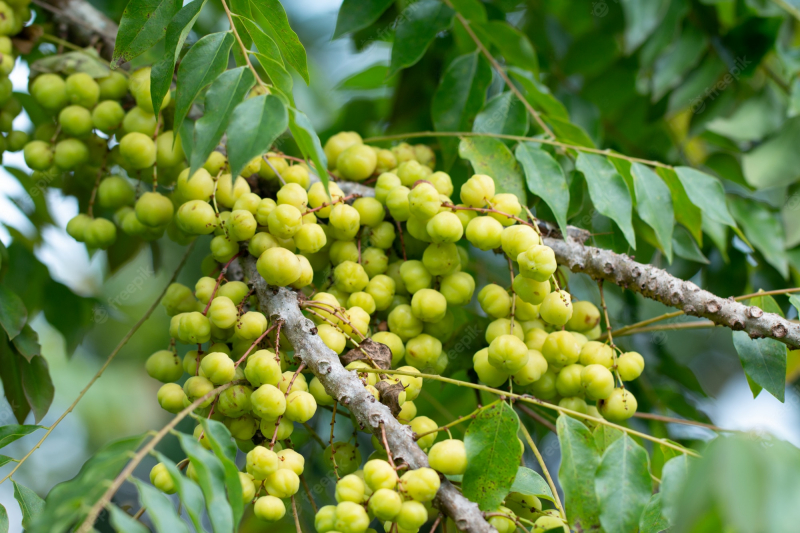Star Gooseberry
Phyllanthus acidus, known as the star gooseberry, malay gooseberry, tahitian gooseberry, or simply gooseberry tree is a small deciduous tree with edible small yellow berries fruit in the Euphorbiaceae (Spurge family). Despite its name, the plant does not resemble the gooseberry, except for the acidity of its fruits. The plant is native to the coastal region of north-eastern Brazil and has been often wrongly ascribed to Madagascar, India, or Polynesia.
Small, monoecious, glabrous, and deciduous star gooseberry trees or shrubs typically reach heights of 2 to 9 meters. The dense, bushy crown of the tree is made up of thick, strong main branches that culminate in clusters of 15 to 30 cm long, deciduous, green branchlets. In addition to residential gardens, the plant can also be found growing in open disturbed areas, quarries, and gardens. Although it can thrive in a variety of soils, the plant likes damp locations. Twice a year, on average, the tree bears fruit and blooms. Flowers and fruits both start to appear at the same time. As a result, the tree typically has fruits hanging from it throughout the year. The fruit is mostly used for pickling and making preserves. You cannot miss the preserves and juices made from this fruit in Jamaica.












